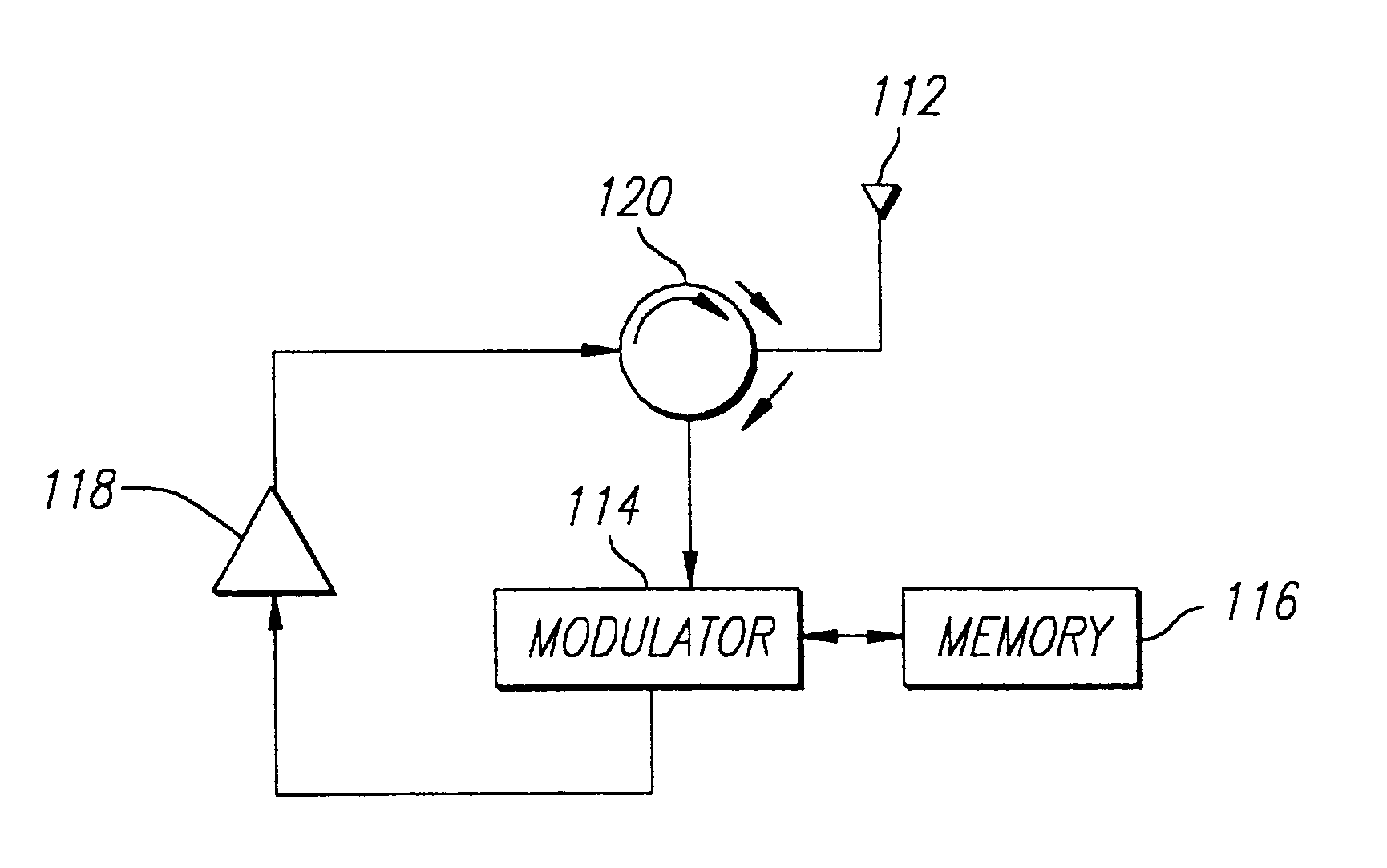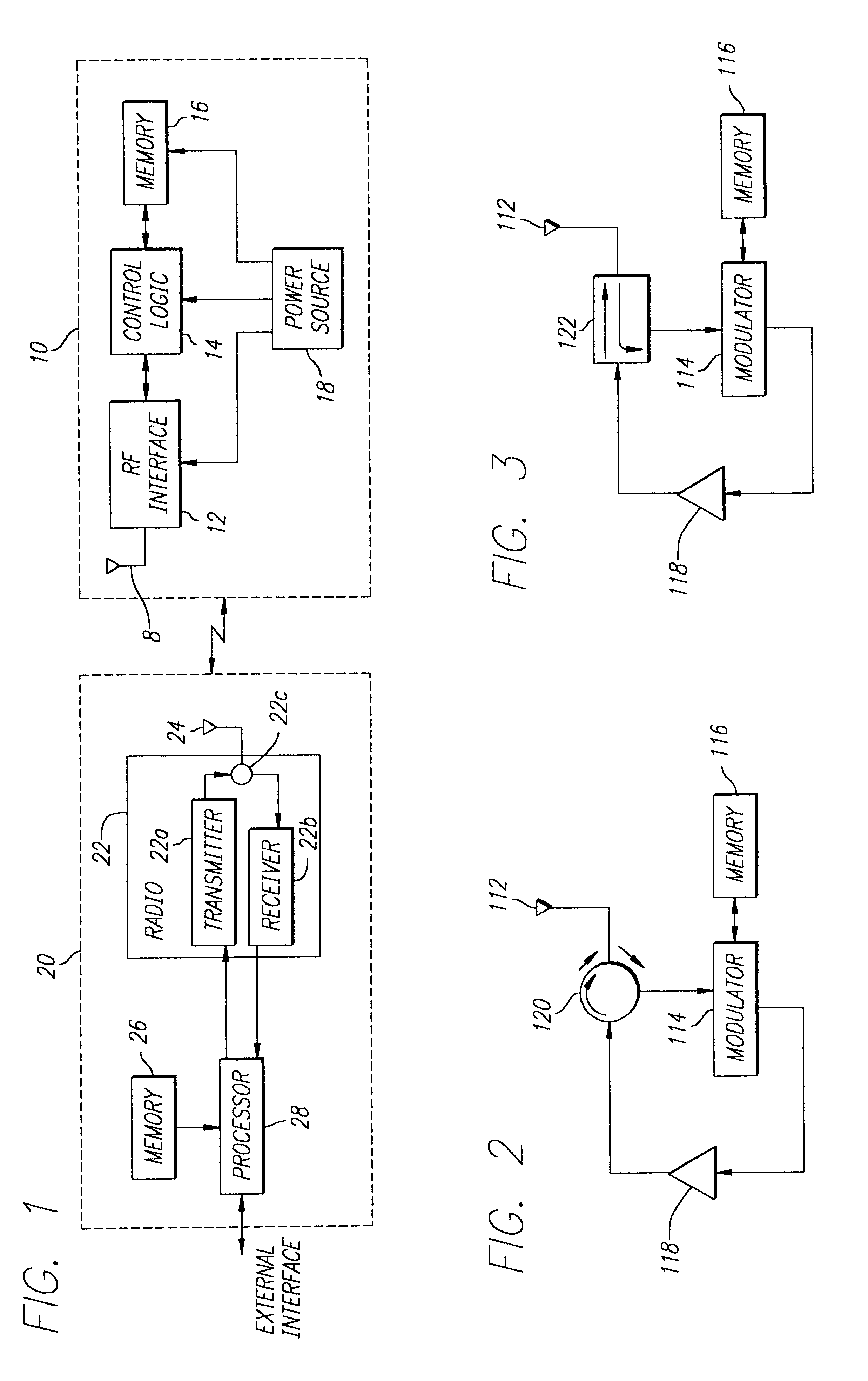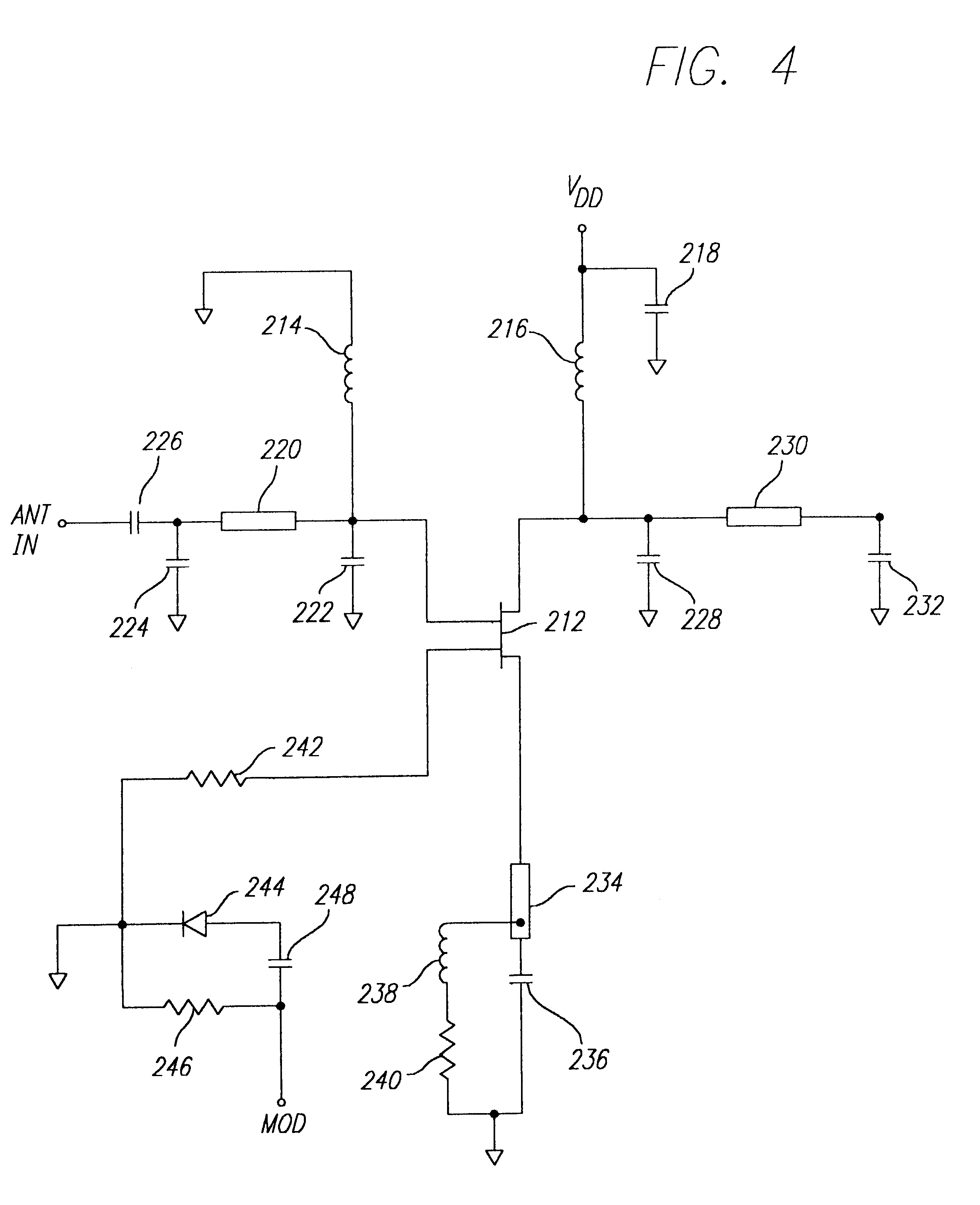RFID transponder having active backscatter amplifier for re-transmitting a received signal
- Summary
- Abstract
- Description
- Claims
- Application Information
AI Technical Summary
Benefits of technology
Problems solved by technology
Method used
Image
Examples
first embodiment
Referring now to FIG. 2, a block diagram of an RFID transponder in accordance with the invention is illustrated. The RFID transponder comprises an antenna 112, a circulator 120, a modulator 114, a memory 116, and an amplifier 118. The circulator 120, modulator 114, memory 116, and amplifier 118 may be disposed on an integrated circuit chip that is disposed on a substrate (not shown). The antenna 112 may be integrally formed on the substrate. Preferably, the antenna 112 comprises thin (e.g., 18 to 35 microns thickness) lines formed of a conductive metal, such as copper. These lines may be formed by plating or adhering or screening a thin layer of copper (or other conductive metal) onto the substrate. This layer may then be etched to form the specific geometric configuration (e.g., dipole, folded dipole, loop, coil, spiral, meander, and the like) of the antenna. Similarly, one or more impedance adjustment elements may be integrally formed on the substrate to modify the impedance of th...
second embodiment
Referring now to FIG. 3, a block diagram of an RFID transponder in accordance with the invention is illustrated. The RFID transponder of FIG. 3 is similar in construction to the RFID transponder of FIG. 2, except that a directional coupler 122 is used in place of the circulator 120. The directional coupler 122 permits simultaneous RF communications therethrough in opposite directions. Accordingly, a signal from the antenna 112 passes through the directional coupler 122 to the modulator, and an amplified signal from the amplifier 118 passes through the directional coupler to the antenna. Alternatively, a power divider could be utilized in place of the directional coupler 122, or the antenna 112 could be directly coupled to the modulator 114 and amplifier 116 without any intermediary device. It should be appreciated that such embodiments would likely not operate as efficiently as the electronic circulator 120 of FIG. 2 or the directional coupler 122 of FIG. 3 due in part to impedance ...
third embodiment
Referring now to FIG. 5, a block diagram of an RFID transponder in accordance with the invention is illustrated. The RFID transponder of FIG. 5 is generally similar to the embodiments described above, but further includes an ability to receive data as well as transmit data, and therefore provides data read and write capability. The RFID transponder comprises an antenna 112 and circulator 120 as described above with respect to FIGS. 2 and 4. In addition, the RFID transponder includes a data detect block 132, a data decode block 134, a processor 136, an amplifier 138, a modulator 142, and a filter 144. The circulator 120 has a first port connected to the antenna 112, a second port connected to the data detect block 132 and a third port connected to the filter 144. The data detect block 132 is connected to the data decode block 134 and the amplifier 138. The amplifier 138 is connected to the modulator 142, which is in turn connected to the circulator 120 through the filter 144. The pro...
PUM
 Login to View More
Login to View More Abstract
Description
Claims
Application Information
 Login to View More
Login to View More - R&D
- Intellectual Property
- Life Sciences
- Materials
- Tech Scout
- Unparalleled Data Quality
- Higher Quality Content
- 60% Fewer Hallucinations
Browse by: Latest US Patents, China's latest patents, Technical Efficacy Thesaurus, Application Domain, Technology Topic, Popular Technical Reports.
© 2025 PatSnap. All rights reserved.Legal|Privacy policy|Modern Slavery Act Transparency Statement|Sitemap|About US| Contact US: help@patsnap.com



